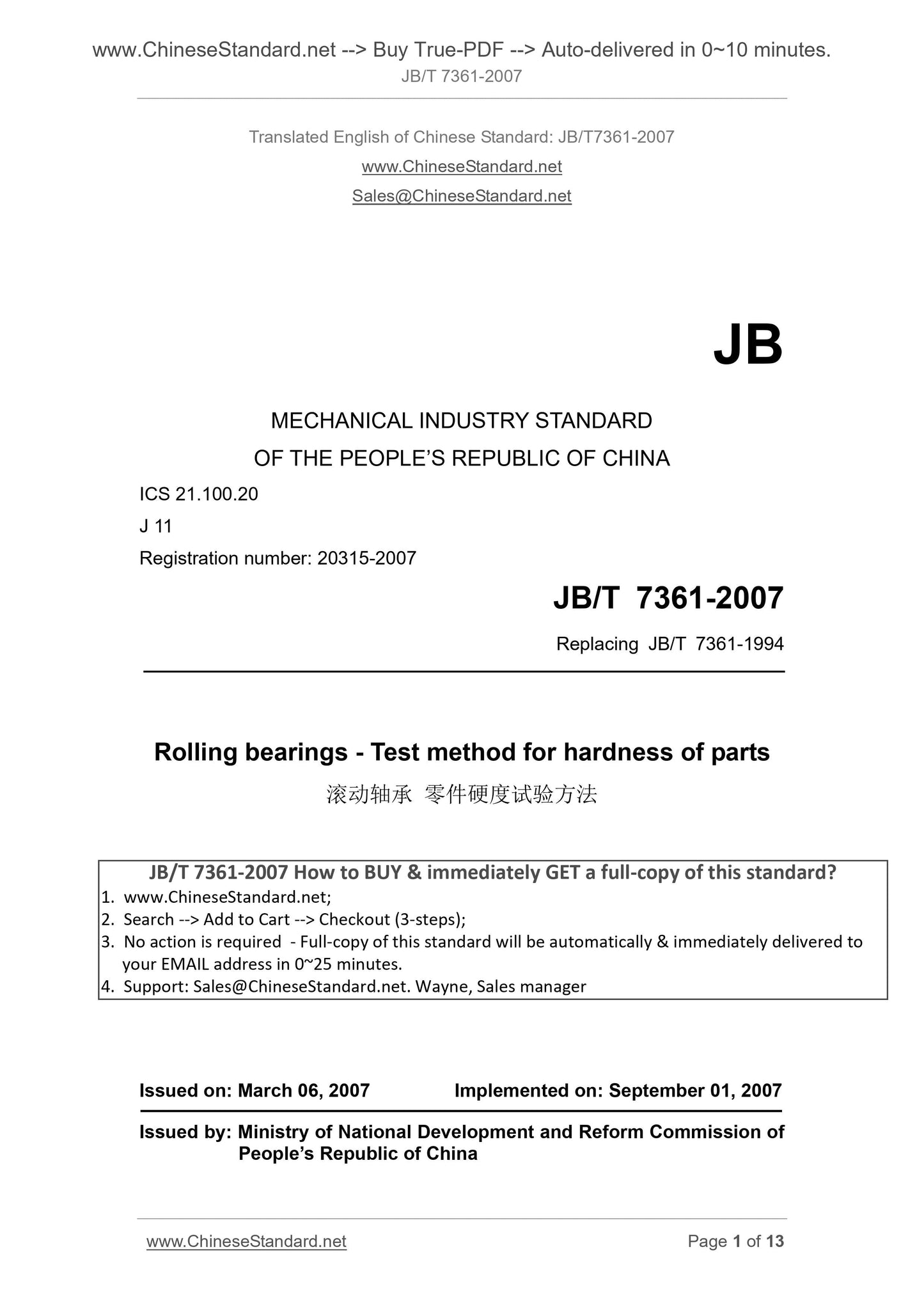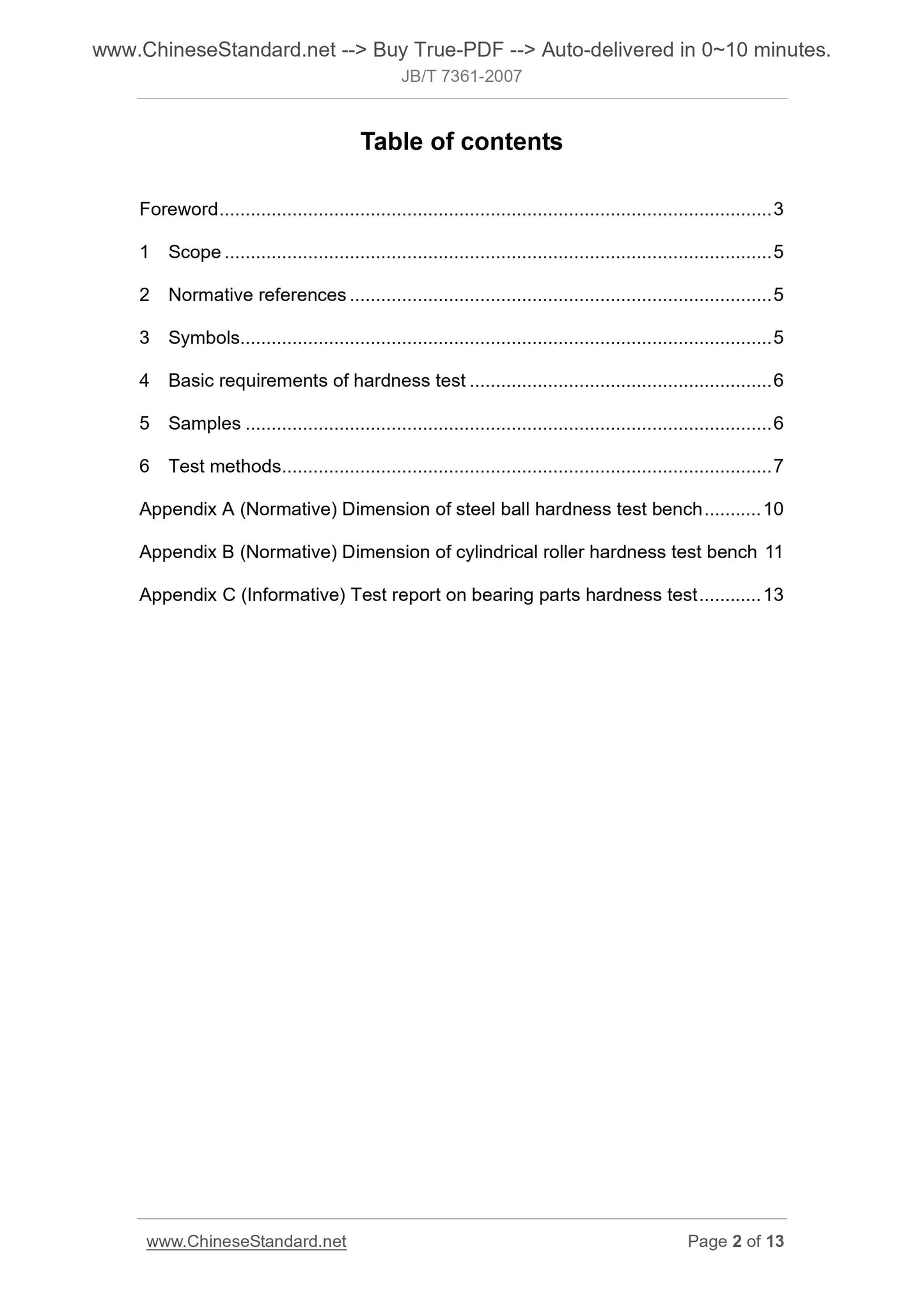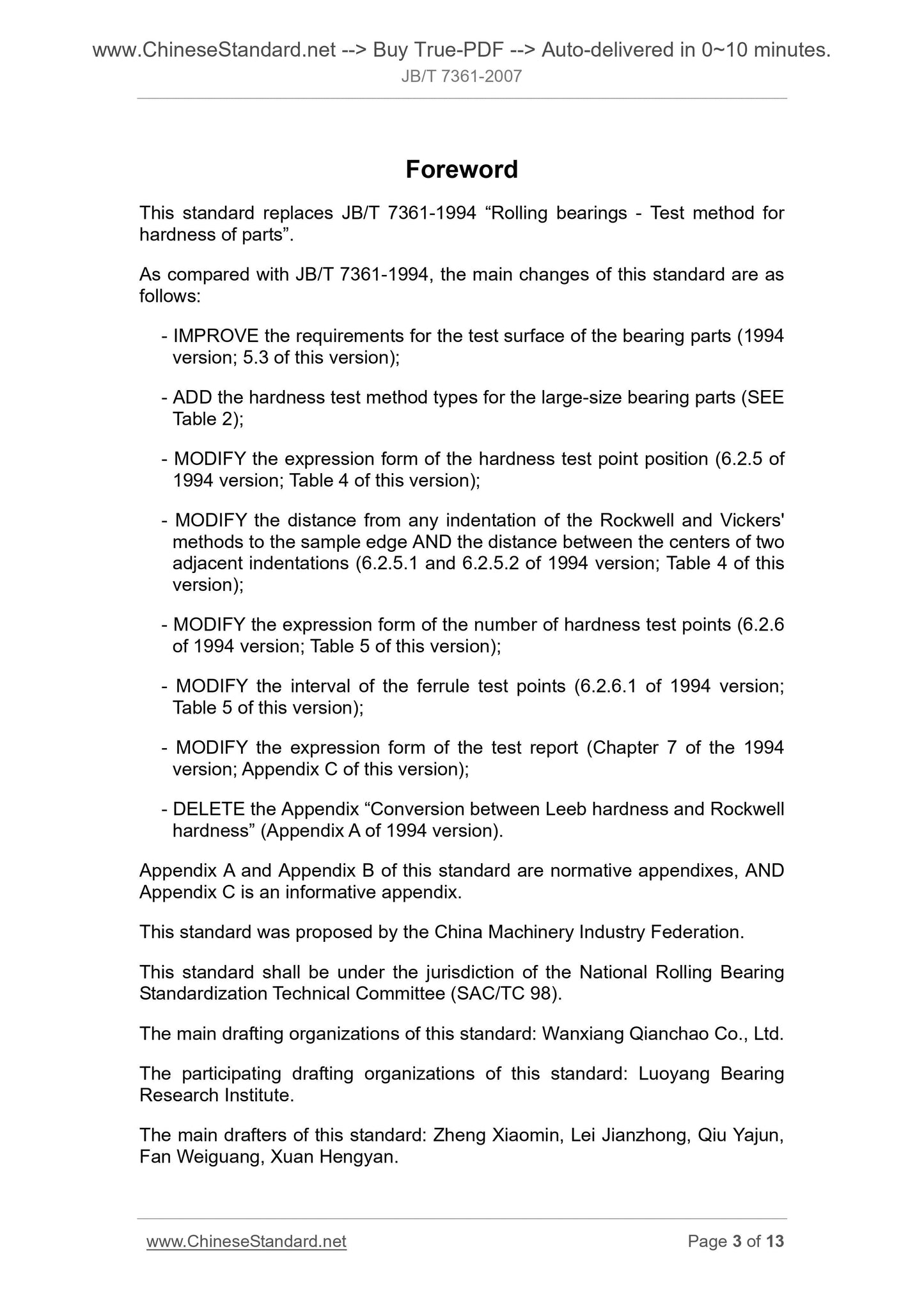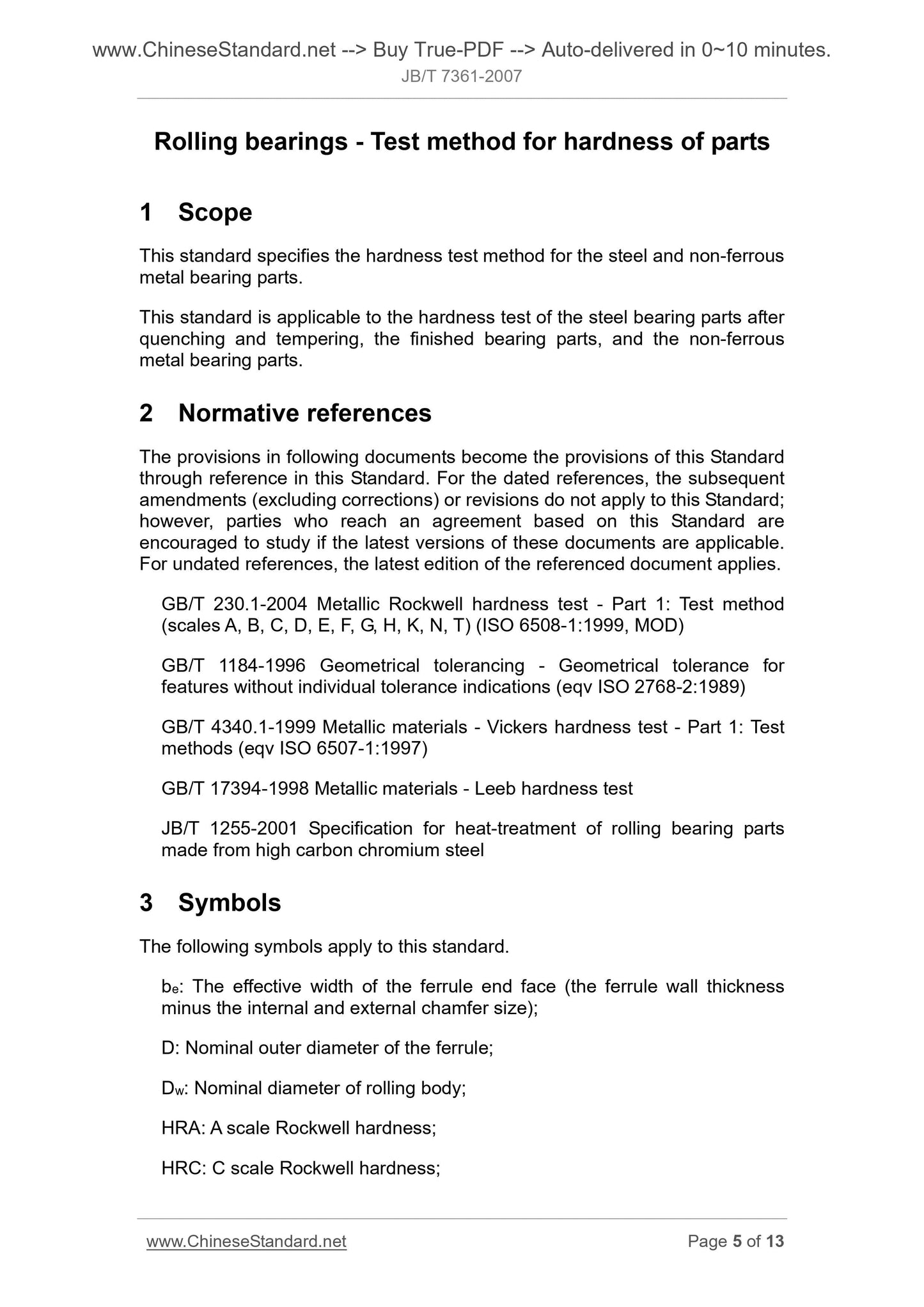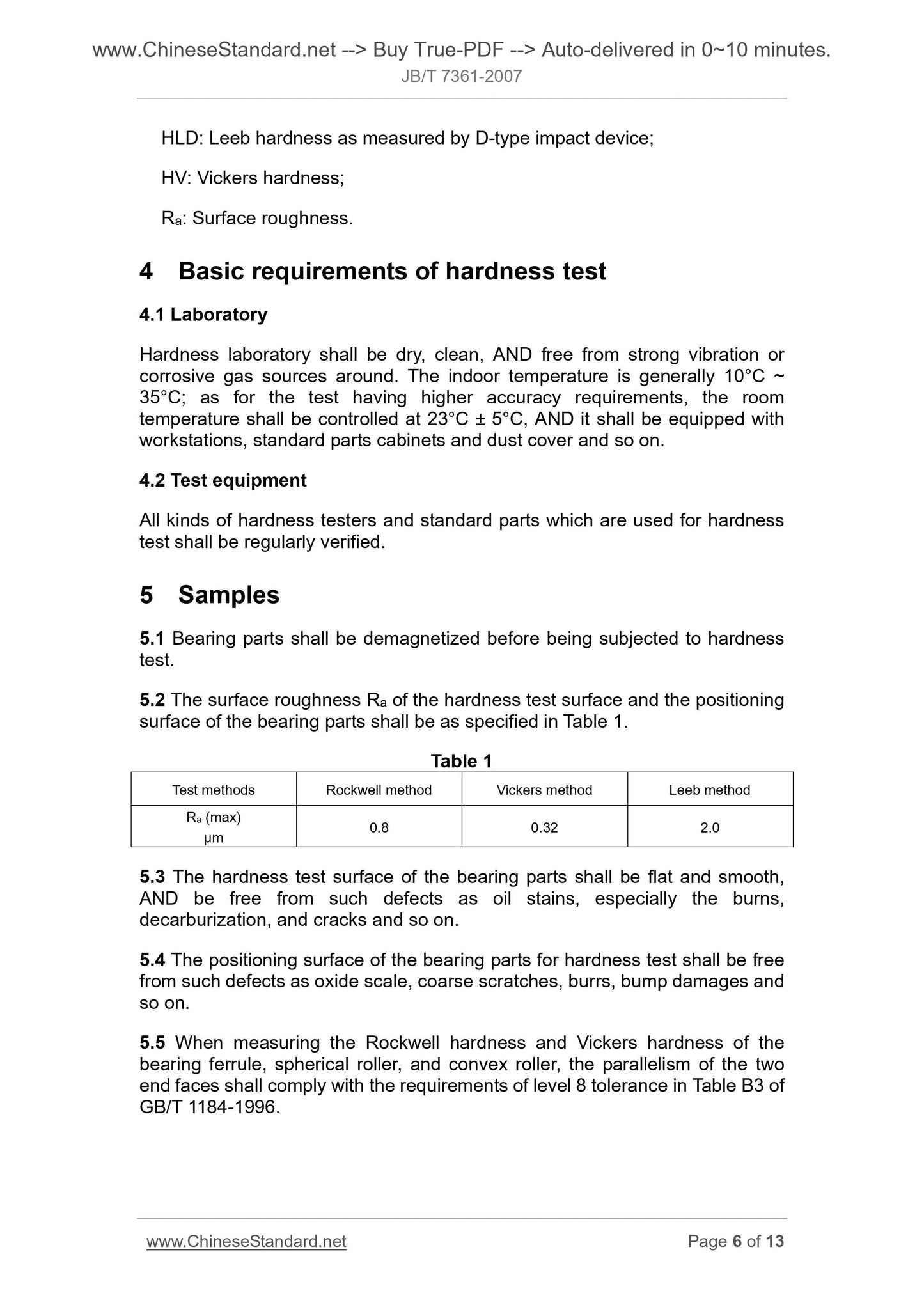1
/
of
5
www.ChineseStandard.us -- Field Test Asia Pte. Ltd.
JB/T 7361-2007 English PDF (JB/T7361-2007)
JB/T 7361-2007 English PDF (JB/T7361-2007)
Regular price
$70.00
Regular price
Sale price
$70.00
Unit price
/
per
Shipping calculated at checkout.
Couldn't load pickup availability
JB/T 7361-2007: Rolling bearings - Test method for hardness of parts
Delivery: 9 seconds. Download (and Email) true-PDF + Invoice.Get Quotation: Click JB/T 7361-2007 (Self-service in 1-minute)
Newer / historical versions: JB/T 7361-2007
Preview True-PDF
Scope
This standard specifies the hardness test method for the steel and non-ferrousmetal bearing parts.
This standard is applicable to the hardness test of the steel bearing parts after
quenching and tempering, the finished bearing parts, and the non-ferrous
metal bearing parts.
Basic Data
| Standard ID | JB/T 7361-2007 (JB/T7361-2007) |
| Description (Translated English) | Rolling bearings - Test method for hardness of parts |
| Sector / Industry | Mechanical and Machinery Industry Standard (Recommended) |
| Classification of Chinese Standard | J11 |
| Classification of International Standard | 21.100.20 |
| Word Count Estimation | 11,148 |
| Date of Issue | 3/6/2007 |
| Date of Implementation | 2007-09-01 |
| Older Standard (superseded by this standard) | JB/T 7361-1994 |
| Quoted Standard | GB/T 230.1-2004, GB/T 1184-1996, GB/T 4340.1-1999, GB/T 17394-1998, JB/T 1255-20001 |
| Regulation (derived from) | ?National Development and Reform Commission Announcement 2007 No.16 |
| Issuing agency(ies) | Ministry of Industry and Information Technology |
| Summary | This standard specifies test methods for hardness of steel and non-ferrous metal bearing parts. This standard applies to hardened steel bearing parts, tempering and non-ferrous metal products bearing parts and bearing parts of the hardness test. |
Share
